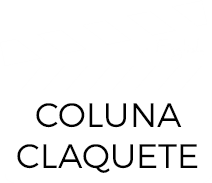Coluna Claquete – December, 21th 2012
It takes little effort to believe that when John Ronald Reuel Tolkien scribbled the first lines of a world inhabited by dwarves, elves, dragons, and other fantastic beings, he never imagined that the fruit of his imagination would become a worldwide phenomenon, explored with the best of cinema technology, in the form of the film “The Hobbit: An Unexpected Journey” by New Zealander director Peter Jackson.
Philologist and professor of English and English literature, Tolkien is considered a leading expert in Anglo-Saxon at his time, teaching at the prestigious Oxford University. But fame came through the books he wrote, and his most famous work was “The Lord of the Rings”, which hit theaters in a trilogy, also directed by Peter Jackson.
Despite all this fame, the first work of Tolkien’s magical world of Middle Earth was “The Hobbit”, which despite having been designed in the late 20s, was only first published in 1937. “The Lord of the Rings”, a continuation commissioned by the publisher, came much later, in 1954.
Bilbo Baggins (Martin Freeman) is a respectable, conservative hobbit. Like most hobbits, Bilbo loves the tranquility of his home, loves good food, attends celebrations of neighbors and friends, and is totally averse to travel and adventure.
One day he is visited by Gandalf (Ian McKellen), one of the five major human sorcerers. Better known as Gandalf the Grey, the wizard presents Bilbo to a company of thirteen dwarves (Bofur, Ori, Kili, Fili, Dwalin, Oin, Bombur, Dori, Gloin, Balin, Nori, Bifur, and Thorin Oakenshield), which aims to recover their underground kingdom, invaded by the mighty dragon Smaug.
The group is led by the brave and proud Thorin (Richard Armitage), heir to the kingdom destroyed at the Lonely Mountain. Smaug is a dragon who long ago pillaged the dwarven kingdom of Thorin’s grandfather and since then sleeps in the vast treasure.
The plot involves other characters like elves warriors, man-eating trolls, stone-throwers giants, bloodthirsty orcs living in caves, immense and heroic eagles, and evil wolves, “wargs”, who are allies of the orcs.
On his journey towards the Lonely Mountain the group faces numerous dangerous situations, and they must seek the help of the powerful Elrond (Hugo Weaving), the Wise, and Gollum, a strange creature inhabiting an underground lake, from whom Bilbo steals a ring which will prove being extremely powerful.
The original story was divided into three parts, so that the current movie explores in great detail the beginning of the journey. While in “The Lord of the Rings” there was necessity of condensing a lot, generating up to an extended version, the problem here was the inverse.
Some fans feared that because of this the pace got too drawn out, so it would be necessary “padding out”, as the people says. Actually, that might be felt by those who read the book. For anyone who stumbles upon the story for the first time, it is remarkable how the film with almost three hours pass quickly. This allowed even the brief appearance of the characters Galadriel (Cate Blanchett) and Saruman (Christopher Lee).
If in the previous trilogy special effects were impressive, in the current movie they are ubiquitous, with more details, including the treatment of the actors, especially the dwarfs, who have to stay on a reduced scale when they are next to Gandalf or the elves.
The work of Andy Serkis, recreating Gollum again, was flawless, though few people have no idea how he looks in reality, since the image of the deformed hobbit is all built on the computer, from the movements of the actor.
The filming was done in 3D cameras, which translates into more natural three-dimensional effects, when viewed in one of these rooms. “The Hobbit: An Unexpected Journey” brought something new to the cinema, which was filming in HFR, or High Frequency Rate.
Since the introduction of talkies, it was standardized that filming and projections would be at 24 frames per second, which gives the illusion of movement, and allow the execution of the soundtrack that is recorded on the tape.
HFR means shooting at 48 frames per second, twice what we are used, and which serve to convey a better sense of continuity, avoiding those “stops” we realize, especially in panoramic drives.
“The Hobbit: An Unexpected Journey” is an interesting and entertaining film that will please the whole family, although some scenes may frighten younger children. It’s an opportunity to relive the magic of Tolkien’s universe, with all the magic that the world of cinema can provide.







